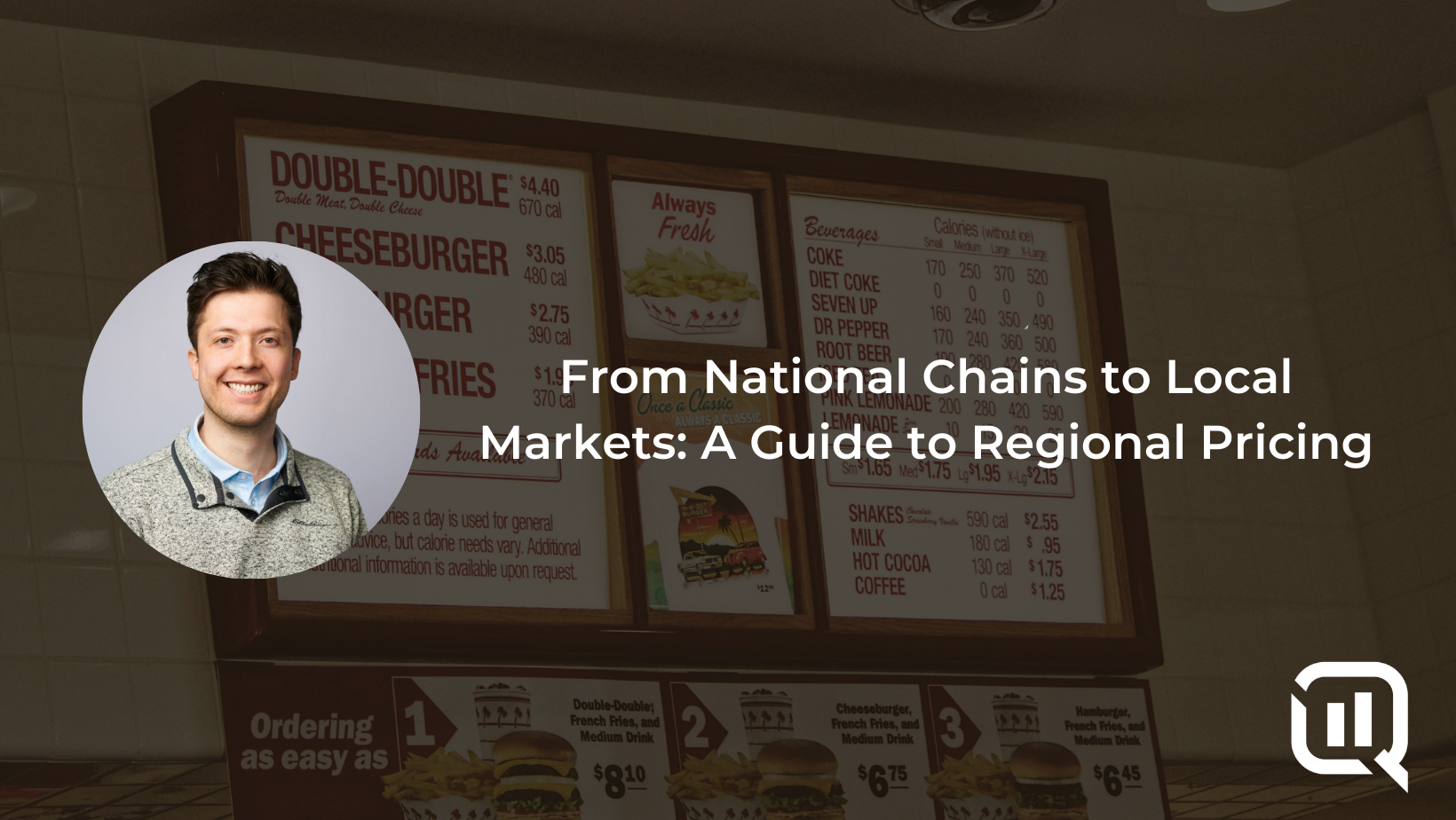A number of years ago, a friend of mine embarked on a road trip that would take him from Minnesota to Boston. With 1,400 miles to conquer and less than that many dollars in his bank account, he endeavored to keep his costs low by only eating fast food. So over the course of his multi-week road trip, he sampled drive-through delicacies at all of the national chains. He favored Starbucks and McDonalds most of all throughout the departure and return trips. Later, when regaling me with his road trip story, he mentioned offhandedly that the prices of menu items at those restaurants changed noticeably in different states or near major metropolitan areas. While the highlights of his story were seeing Niagara Falls and Bunker Hill, I latched on to that one comment about regional price differences. At that point in time, my friend probably had more knowledge of the pricing situation of national restaurant chains than many of them did themselves!
Despite the ubiquity of national fast-food chains, regional pricing variations remain a black box for many of them. As I’ve written about before, one size fits all pricing strategies are nearly defunct. Any national company with a presence in various regions is working to capture the maximum price consumers in that region will pay. That’s why the chicken nugget basket my buddy paid for in rural Wisconsin was less expensive than one just outside of Chicago. So, national chains are pricing regionally. But the key ingredients that nearly everyone is missing? An understanding of:
- Who are their local competitors?
- What are the prices & promotions at those local competitors?
The first gap sounds simple enough to solve. Ask your local store franchise owners to report on who they believe they compete against in their market. But to effectively understand regional pricing dynamics, businesses must go beyond anecdotal evidence and delve into specific data points. How many miles away is the competing store? How many competing stores are in a 5 mile, 10 mile or 20 mile radius? What are their unique promotional strategies? In order to identify those variables, it’s much easier to use a website’s store locator using identified zip codes or designated market areas. When a national chain is able to map their store numbers to competitor stores, the next level of regional insight is unlocked: price and promotion comparisons.
Benchmarking national menu items to those at corresponding nearby stores provides a crystal clear view into regional price competitiveness. Sometimes that benchmarking is as easy as comparing a medium pepperoni pizza at Dominos to the one at Pizza Hut. But there is opportunity for more nuanced matches – like “Chicken Avocado Salad with Pret’s Simple Vinaigrette” at Pret A Manger to “Balsamic Chicken Greens with Grains” salad at Panera Bread. By conducting detailed menu item comparisons, store managers can gain valuable insights into categorical pricing trends. For example, analyzing data that might reveal that the sandwich category of items is generally overpriced empowers businesses to make informed decisions.
It’s not just the corporate pricing team that influences regional pricing decisions within national restaurant chains. Franchise owners, driven by their understanding of local markets, often have varying perspectives on pricing strategies. The needs and beliefs of franchise owners drive most price variation at the regional level. It’s not uncommon for franchisees and corporate teams to butt heads. A franchise owner might feel that the national HQ is disconnected from the local market that they are trying to succeed in while corporate might feel that a franchise leader is being reticent to change and closed to new ideas. Ultimately, both parties want each store to succeed. They just need a tool that takes into account local factors while also providing national leadership with a framework to build a pricing strategy around. That’s why data makes these conversations so successful.
By automating the process of gathering competitive data, local owners can develop informed promotional strategies. Corporate marketing and pricing teams can then leverage this data to propose targeted pricing tactics. This shifts conversations from subjective debates to data-backed discussions. Meetings based on data and dashboards that illuminate menu comparisons and uncompetitive products foster a more productive, collaborative environment.
I worked with a national pizza chain several years ago that had determined they were losing almost one million dollars per month because of over-discounting. Autonomous franchise owners, responding to perceived local market pressures, offered aggressive promotions that undermined the brand’s premium positioning and obliterated profit margins. Corporate advisors were entirely unsuccessful in swaying determined franchisees away from frantically renewing deep discounts until they presented data-driven insights.
By demonstrating an understanding of local market dynamics and providing recommendations based on competitive intelligence, corporate advisors were able to effectively address the issue of over-discounting. This approach ultimately helped to mitigate the destructive impact of excessive promotions on the chain’s profitability.
National restaurant chains often have hundreds of store locations servicing dozens of types of markets. The complexity that naturally comes with trying to manage and address the nuances of that many locations has meant that competitive intelligence is often overlooked. But gaining an understanding of local market competition does not need to be difficult. What’s needed is a partner that can harvest prices and promotion data regionally, alongside dashboards and visualizations that make that data easy to understand. QL2 has years of experience providing this service to customers. Whether your chain’s competitive set is just Uber Eats in the Northeast or 10 national competitors competing across 3,000 zip codes, we have you covered. Reach out to me at cschneider@ql2.com to start a conversation today!



